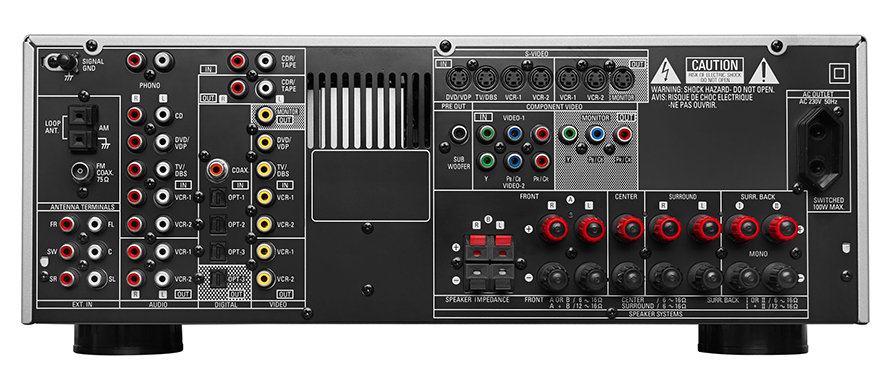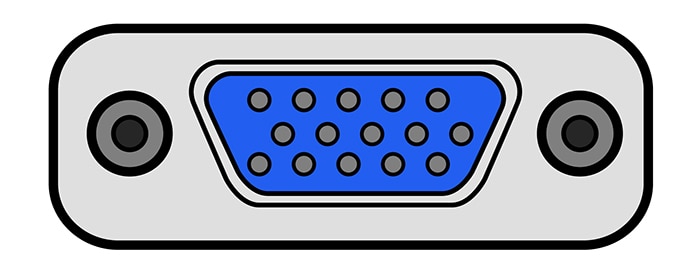There are multiple types of wire used in the construction of a home theater, sometimes referred to as cable, it's the same thing. In this context, wire sends audio signals from the amplifier or receiver to the speakers.
Wires that connect one electronic device to another are otherwise known as interconnections.

This list should cover all of the cables that you might need. Relevant input ports are always clearly labeled on the connection panel. Adaptors are inexpensive and readily available should you be missing a more specific wire.

HDMI cables transmit high-definition audio and video signals from TVs to other devices. Devices with HDMI connections tend to produce the best audiovisual experiences in 1080p.

DVI cables transmit digital video content at high resolution. The most prevalent use of this connection is in Projectors and computer monitors.
A physical and electrical connection between two pieces of AV equipment. A device needs a 21-pin female port to house the 21-pin male end of the cable. Usually only seen in older equipment such as VCR and DVD players.
Component wires split video signals into 3, signified by their differing colors. They are capable of carrying both standard and high definition images.

Typically blue connectors that display data by linking computers to devices with display screens, such as TVs and projection screens.

S-Video is an analog video connection standard that splits into two. One carries the black and white signal, the other carries color. Usually found on analog TVs or DVDs, they control the color saturation and hue.
A coaxial is a shielded and insulated copper cable that carries high-quality audio signals often favored by home theater audio experts.
RCA cables transmit analog and audio composite video signals between devices such as; TVs, VCRs, games consoles, and speakers. Available in both stereo and surround sound formats.
Here things become a little more complicated as speakers don't necessarily come with the appropriate wires. It is because all home theater sizes are different and the spacing of speakers varies from room to room.
When buying speaker wire, there are a few considerations:
Measured in ohms (Ὡ), impedance is the relationship between current and voltage in a circuit.
The high-volume of audio signal travels more easily through a larger tube.
Speakers with low impedance allow increased electricity to flow freely.
The most important property of speaker cable is resistance. It is the measurement of the amount of energy that gets lost as the signal passes along the wire. It affects all types of cables; the lower the resistance rate, the greater its ability to transmit high-quality sound.
Resistance measurements depend upon three factors:
The resistance of a loudspeaker is directly proportionate to the length of the cable. Keep cables as short as possible for optimal results, and to achieve the best sound balance, ensure that cables are of equal length.
The cross-sectional distance of a wire is relative to its resistance. The smaller the gauge, the higher the resistance.
Copper is the most prevalent material used to conduct electricity through a cable as it is relatively inexpensive, pliable, and is very conductive.
Silver and gold are other options, however, their higher cost outweighs their reduced resistance.
Copper and silver are both prone to oxidization, whereas gold isn't. That makes it the best yet most expensive option.
A single-core wire is the most common and the most straightforward to use.
Bi-wire is compatible when the speaker and amplifier have two separate connections; 1 for bass and the other for all other frequencies.
This system gives the user more control over the audio as the speakers connect to individual amps.
Installation is harder and not for the uninitiated.
We find that 16 gauge wire is ideally suited for most applications when wiring a regular-sized home theater with short run distances between speakers.
Where speaker distance exceeds 50-feet or for installing in-ceiling speakers, we recommend the step-up to 14 gauge, possibly even 12 gauge wire to benefit from reduced signal loss.
Much of the wiring job is self-explanatory, however, keep the following tips in mind when wiring a home theater.
The best way to make a secure and stable connection to front speakers is by using banana connectors.
However, don't assume you need the for every speaker in the system. For hidden speakers, the bare wire will do an equally good job, saving you time, money, and effort in the process.
Marking every single cable in numerous places as you go will save a lot of stress later. It is hard work tracing long cables back to the source when there is an issue with just one of the wires.
Yes, cables should be kept as short as possible to maintain as little loss of signal as possible, but they shouldn't be too tight. A little slack in the wire allows you to maneuver devices should you need to.
Don't be afraid to swap out long cables for much shorter interconnections to reduce the amount of untidy cable between devices. Unsightly cables are poised to be potential hazard issues.
It is worth investing in a set of wire strippers if your speakers have binding post connectors. A bare wire makes for the most secure connection with the best sound clarity. Stray wires can create poor sound quality.
If audio isn't as loud as you had expected, consider moving the speakers closer together. Either that or upgrade the wire to prevent such a high percentage of signal loss.
Loose wires look unsightly and become trip hazards. Damaged wires are not only fire hazards but contributors to reduced service life of devices.
Plastic trunking is an effective, easy to install, and affordable method of keeping the home theater tidy.
The in-wall installation of wires is by far the better option for a more professional finish.
Running cables beneath the final layer of drywall is best done during construction.
If this isn't possible, some light DIY skills are required to channel out recesses within the existing drywall. Once the wire is in place, a skimmed layer of plaster over a metal casing will finish the job.
If this, or any other aspect of home theater wiring is beyond your skillset, it is always wise to call on the help of a professional. Better to be safe than sorry.
Pre-planning is the key when wiring a home theater.
Use a room plan to mark out the positioning of each piece of equipment to estimate the amount of and which types of wires you will need.
Interconnecting devices won't be the sole consideration; you will need outlets near to each seat if they have powered recline and charger points.
LED rope lights make a stunning finishing touch along walkways, step risers, and the ceiling perimeter. Each of which needs an adequate power supply.
